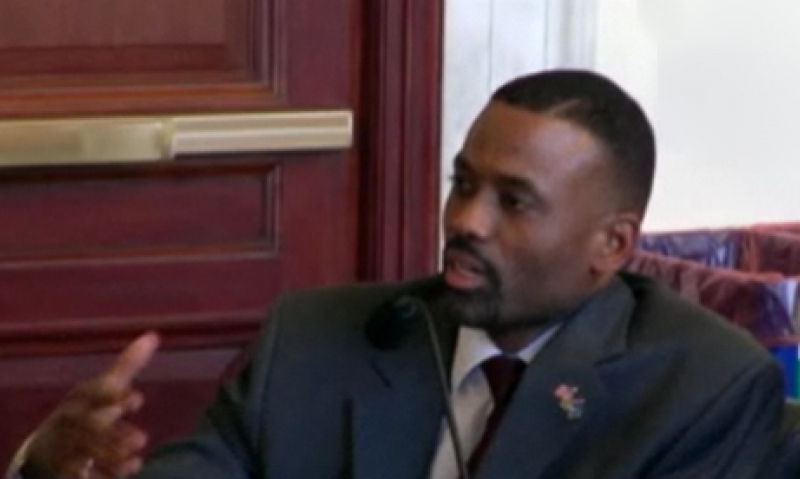
Funding the key to veterans employment
In early April, Federal Reserve chairman Ben Bernanke spoke to members of the Dallas Regional Chamber and said "the financial crisis looks to be mostly behind us, and the economy seems to have stabilized and is beginning to grow again. But we are far from being out of the woods. Many Americans are still grappling with unemployment ... And, although much of the financial system is functioning more or less normally, bank lending remains very weak, threatening the ability of small businesses to finance expansion and new hiring."
Bernanke restated his view April 14 in Washington before the Joint Economic Committee. His forecast is especially unpleasant for veterans and their advocates.
The truth is, young military veterans are among the hardest hit of unemployed Americans. As of March 2010, the national unemployment rate was 9.7 percent - nearly identical to 9.8 percent rate among all veterans. But the jobless rate among Iraq and Afghanistan veterans is an alarming 14.7 percent. Even more dramatic is the number of young vets who are jobless. Among 18- to 24-year-old former servicemembers, 21.1 percent were reported to be unemployed in 2009.
The long-standing reason veterans have trouble finding civilian is simple: Training and skills obtained in the service do not always translate into real-world usefulness.
In testimony presented to a House subcommittee, The American Legion's Mark Walker said veterans "need proper training and tools to begin new careers after they leave military service. There are thousands of veterans available for work, but they lack marketable, technological skills, especially for jobs that exist in the Information Age economy. The problem is clearly a lack of adequate funding."
Walker, deputy director of The American Legion's Economic Division, testified April 15 before the House Veterans' Affairs Subcommittee on Economic Opportunity.
The funding shortage Walker referred to is for civilian job training under the Veterans Workforce Investment Program (VWIP), part of the Department of Labor's Veterans Employment and Training Service (VETS). The program has an annual appropriation of $9.6 million - enough to operate in only 15 states. The American Legion is urging that the budget baseline "be increased to allow VETS to train eligible veterans in all 50 states in (fiscal) 2011."
Walker also testified that The American Legion "is eager to see VETS grow; and especially would like to see greater expansion of entrepreneurial-based, self-employment opportunity training." In order for the VETS program to assist these veterans to achieve their goals, Walker said it needs to:
• Expand its outreach efforts with creative initiatives designed to improve employment and training services for veterans;• Provide employers with a labor pool of quality applicants with marketable and transferable job skills;• Provide information on identifying military occupations that require licenses, certificates or other credentials at the local, state or national levels;• Eliminate barriers to recently separated servicemembers and assist in the transition from military service to the civilian labor market;• Strive to be a proactive agent between the business and veterans communities to provide greater employment opportunities for veterans; and,• Increase training opportunities, support and options for veterans who seek self-employment and entrepreneurial careers.
The American Legion supports new legislation - introduced by Rep. Peter Welch, D-Vt. - that would authorize $60 million for the next ten years to fund MOST (Military Occupational Specialty Transition), a program that would help veterans convert their military experience into civilian job skills.
Welch's proposed MOST program is modeled after the highly successful Service Members' Occupational Conversion and Training Act (SMOCTA).
According to Walker, "SMOCTA was originally established to respond to the needs of veterans who had been hurt by the downsizing of the military in the 1990s by providing job training and employment to eligible veterans.
"Veterans eligible for assistance under SMOCTA were those with a primary or secondary military occupational specialty that DoD determined were not readily transferable to the civilian workforce, or for those veterans with a service-connected disability rating of 30 percent or higher."
VETS uses specialists from the Disabled Veterans Outreach Program and the Local Veterans' Employment Program to assist job-seeking veterans with disabilities. While the law presently requires veterans (preferably disabled ones) to be hired as DVOP specialists, no such requirement exists for LVER. The American Legion wants both programs to hire veterans only.
The American Legion is also urging that the process of determining veterans' eligibility for the benefits of the VR&E (Vocational Rehabilitation and Employment) Service be substantially streamlined and bolstered with a larger, properly trained staff. "The mission of the VR&E program is to help qualified, service-disabled veterans achieve independence in daily living and, to the maximum extent feasible, obtain and maintain suitable employment," Walker said.
Two more American Legion representatives are scheduled to testify before Congress this month: Economic Division Director Joe Sharpe and the division's assistant director, Bob Madden.
